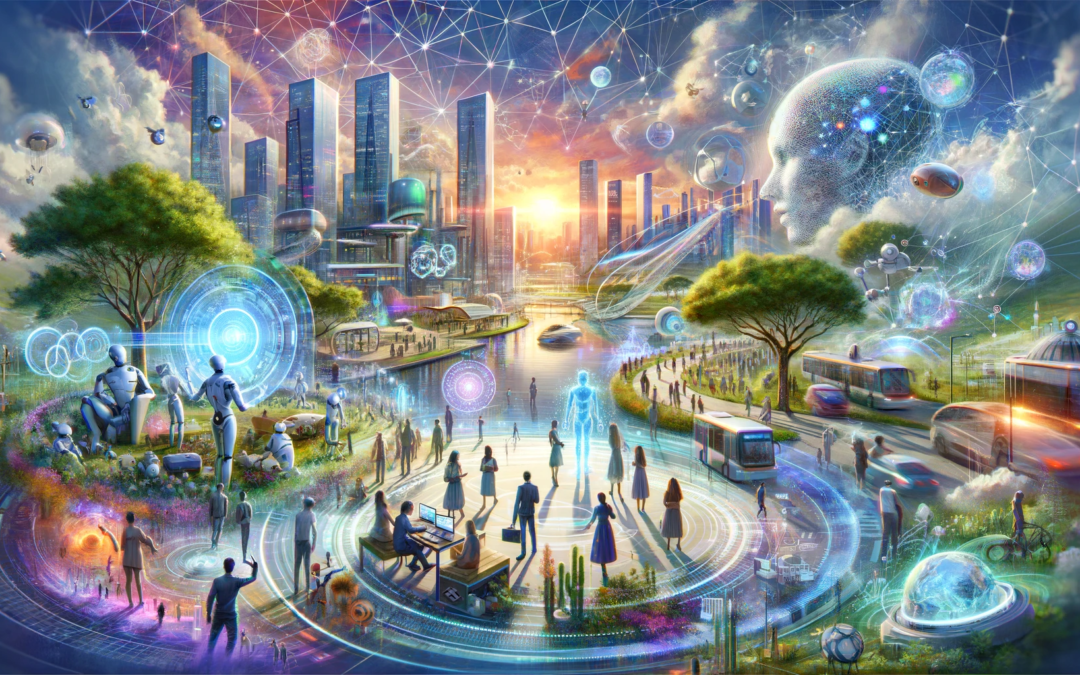In the realm of human-level artificial intelligence (AI), there exists a metaphorical “Secret Covenant,” a set of unwritten rules and understandings that guide the development and deployment of AI systems. This covenant, though not formalized, shapes the ethical, social, and technical landscapes of AI. Let’s explore this enigmatic concept in detail.
The Invisible Guidelines
Responsibility Over Capability: AI developers often abide by the principle that the ability to create advanced AI does not absolve them from the responsibility of its impact. This unwritten rule emphasizes cautious advancement, considering long-term effects over short-term gains.
Ethics Before Profits: A common understanding in the AI community is to prioritize ethical considerations over financial benefits. This covenant stresses the importance of AI being a tool for societal good rather than just a commercial commodity.
Transparency as a Norm: There’s an unspoken agreement about the importance of transparency in AI systems. This includes clear communication about how AI systems make decisions, their limitations, and their potential biases.
Collaboration Over Competition: In the field of human-level AI, there’s a strong undercurrent advocating for collaboration between organizations and nations, over individual triumphs. This spirit fosters shared advancements and mitigates the risks of AI becoming a tool for dominance.
Respect for Privacy: An essential part of this secret covenant is the respect for individual privacy. AI developers and companies often silently agree to uphold privacy standards, even when not legally mandated.
The Ethical Pillars
Non-maleficence: This principle guides AI developers to ensure their creations do not cause harm, be it physical, psychological, or social.
Beneficence: AI should be designed with the intention to do good, to enhance human capabilities, and to solve pressing global challenges.
Autonomy: Respecting human autonomy implies that AI should not unreasonably constrain or manipulate human behavior.
Justice: This pillar calls for fairness in AI, ensuring that its benefits and burdens are distributed equitably.
The Social Contract
The secret covenant of AI also embodies a social contract between AI developers, users, and those impacted by AI. This contract involves:
Public Engagement: Regular interaction with the public to gauge their expectations, fears, and aspirations regarding AI.
Policy Influence: Silent advocacy for policies that ensure responsible AI development and usage.
Global Perspective: Recognizing the international impact of AI, this covenant encourages a global outlook, respecting cultural differences and global challenges.
The Unseen Challenges
Despite these guiding principles, the AI community faces several challenges:
Balancing Innovation and Regulation: Finding the sweet spot between encouraging innovation and implementing necessary regulations is a constant struggle.
Addressing Unintended Consequences: As AI systems grow more complex, predicting and managing unintended consequences becomes harder.
Maintaining Public Trust: Ensuring that AI development aligns with public interest is crucial for maintaining trust and acceptance.
The Future Covenant
Looking ahead, the secret covenant of AI may evolve to include:
Sustainable AI: Emphasizing environmentally sustainable practices in AI development.
Human-AI Symbiosis: Fostering a future where AI and humans coexist and complement each other’s capabilities.
Enhanced Global Cooperation: Strengthening international collaboration to manage the global implications of AI.
Conclusion
The secret covenant of AI, though an abstract concept, plays a pivotal role in steering the field towards a future that is ethically sound, socially responsible, and technologically advanced. It’s a reminder that in the world of AI, unwritten rules are sometimes as powerful as the coded algorithms.










